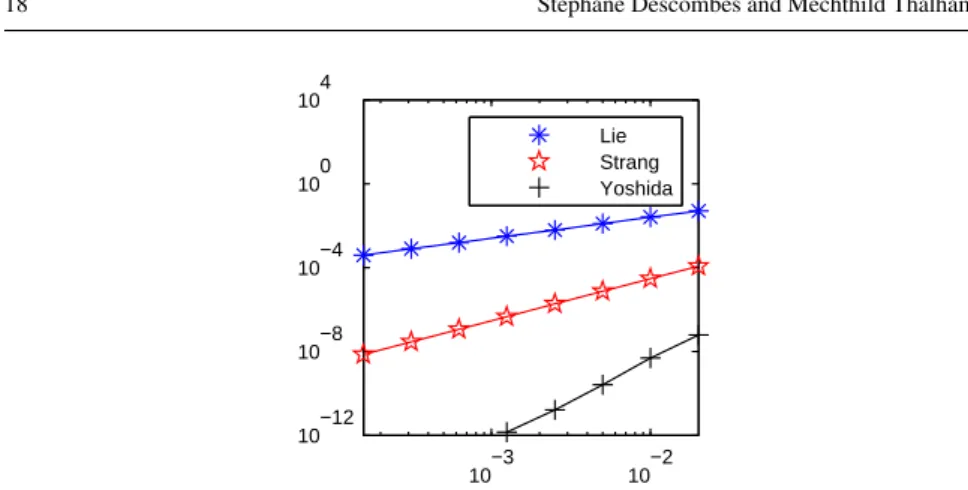An exact local error representation of exponential operator splitting methods for evolutionary problems and applications to linear Schrödinger equations in the semi-classical regime.
Texte intégral
Figure


Documents relatifs
223 (2017) 57–94], which is an analogue of the Wasserstein distance of exponent 2 between a quantum density operator and a classical (phase-space) density, we prove that the
Loin de s’inscrire dans un registre d’imitation, comme dans sa définition classique, le modèle devient un instrument pour accéder à une autre représentation, à première vue plus
We show, by an operator-theoretic proof, that the well-known Lie and Strang formulae which are splitting methods are approximations of the exact solution of order 1 and 2 in
Operator splitting methods have gained a lot of attention in recent years to solve numerically partial differential equations, as the subsystems obtained are usually easier to solve
In our case, though the initial equation is linear, the splitting propagator can be viewed as a non-linear function of the infinite dimensional operators − ∆ and V , and we
Thalhammer, An exact local error representation of exponential operator splitting methods for evolutionary problems and applications to linear Schr¨ odinger equations in
This requires several side contributions that are interesting on their own, that is, a new and simple formalization of the learning problem that allows exponential rates of